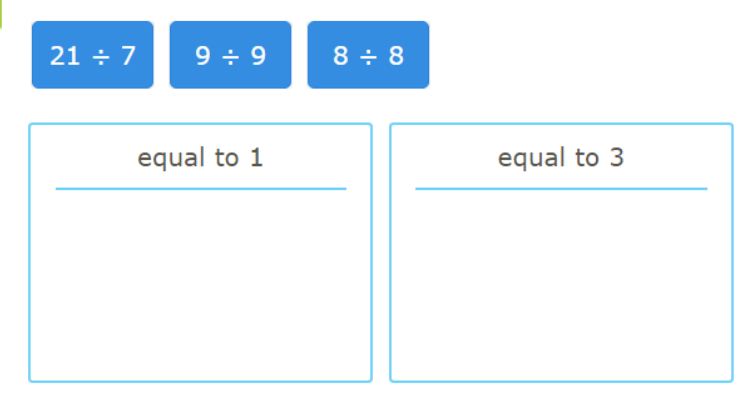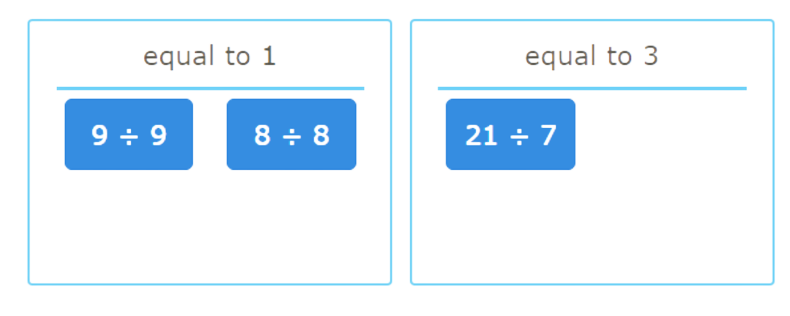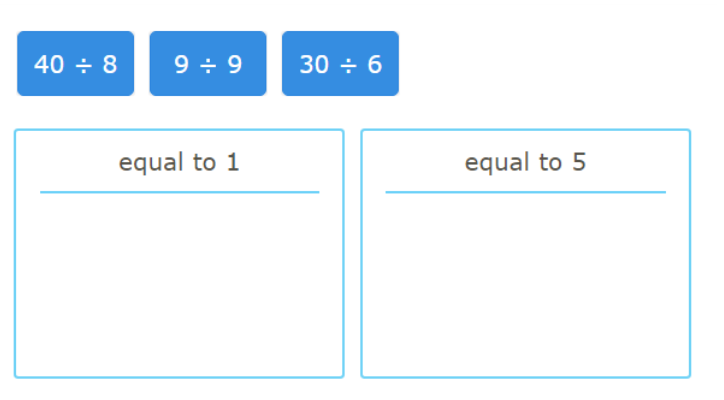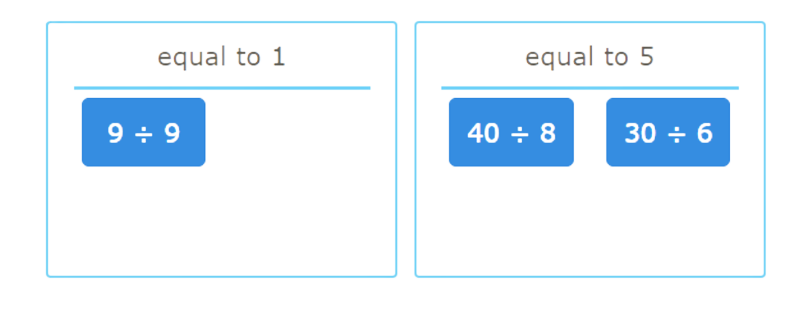Division facts for 6, 7, 8, 9: sorting
Key Notes :
Understanding Division Facts
- Division is the process of splitting a number into equal parts.
- Example: 42÷6=7 means 42 is split into 6 equal groups of 7.
Division Facts for 6
Common division facts:
- 6÷6=1
- 12÷6=2
- 18÷6=3
- 24÷6=4, and so on.
Division Facts for 7
Common division facts:
- 7÷7=1
- 14÷7=2
- 21÷7=3
- 28÷7=4, and so on.
Division Facts for 8
Common division facts:
- 8÷8=1
- 16÷8=2
- 24÷8=3
- 32÷8=4, and so on.
Division Facts for 9
Common division facts:
- 9÷9=1
- 18÷9=2
- 27÷9=3
- 36÷9=4, and so on.
Sorting Division Facts
- Group division facts by divisor (6, 7, 8, or 9).
- Example: 18÷6=3 goes in the “6” group, while 18÷9=2 goes in the “9” group.
- Use tables, charts, or flashcards to practice sorting.
Real-Life Applications
- Sharing objects equally among friends.
- Distributing candies, pencils, or books evenly.
Learn with an example
🎯 Divide to find the answers. Is each answer equal to 1 or 3?
🎯 Place each expression into the correct box.

Divide to find the answer for each expression.
21÷7=?
You can use the related multiplication fact to help you divide.
- ?×7 = 21
- 3×7 = 21
- 21÷7 = 3
- 9÷9=?
Any number divided by itself is equal to 1.
- 9÷9=1
- 8÷8=?
Any number divided by itself is equal to 1.
- 8÷8=1
Place each expression into the correct box.

🎯 Divide to find the answers. Is each answer equal to 1 or 5?
🎯 Place each expression into the correct box.

Divide to find the answer for each expression.
- 40÷8=?
You can use the related multiplication fact to help you divide.
- ?×8 = 40
- 5×8 = 40
- 40÷8 = 5
- 9÷9=?
Any number divided by itself is equal to 1.
- 9÷9=1
- 30÷6=?
You can use the related multiplication fact to help you divide.
- ?×6 = 30
- 5×6 = 30
- 30÷6 = 5
Place each expression into the correct box.

Let’s practice!🖊️

